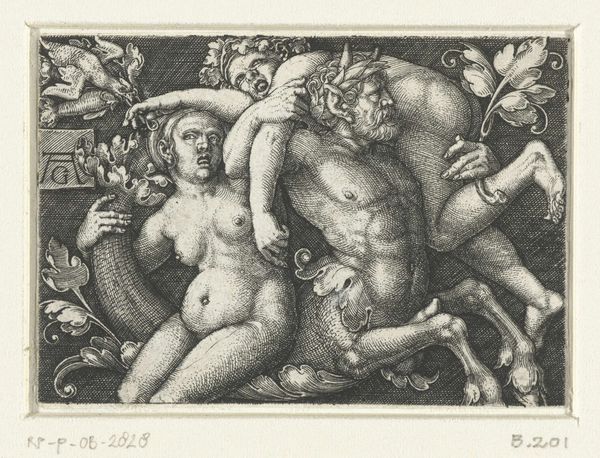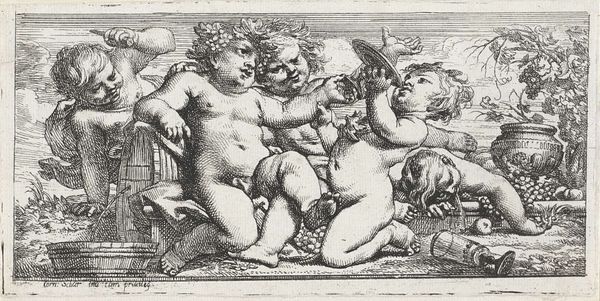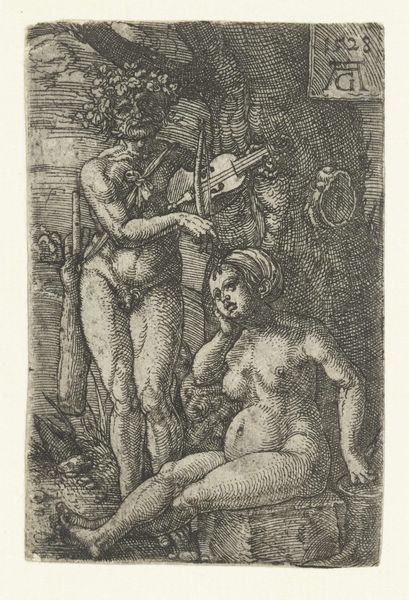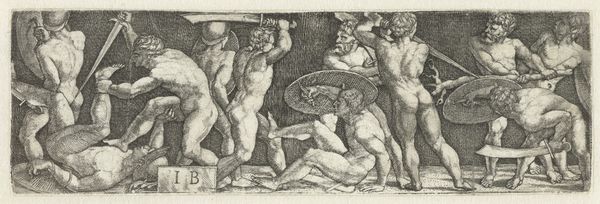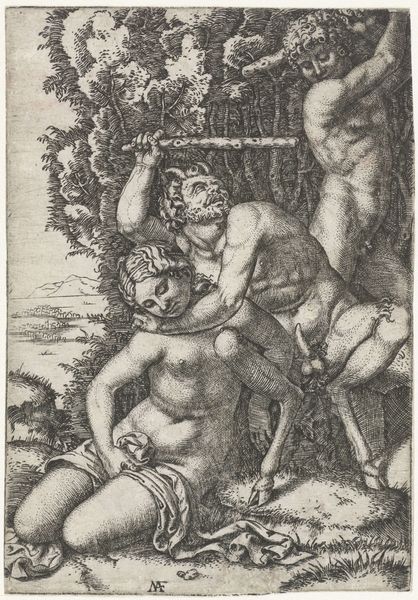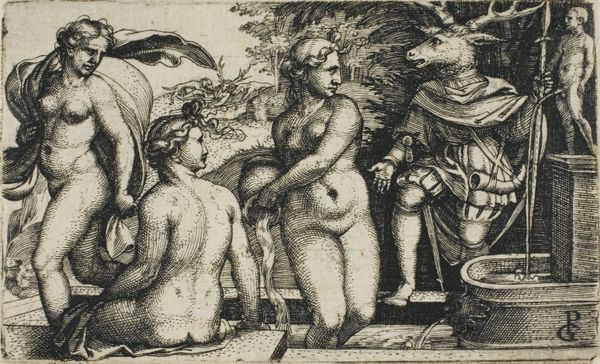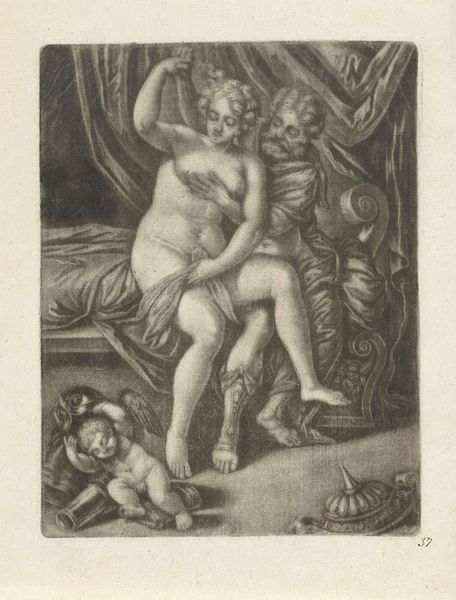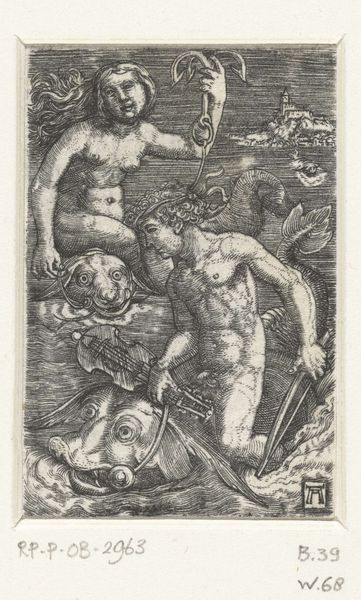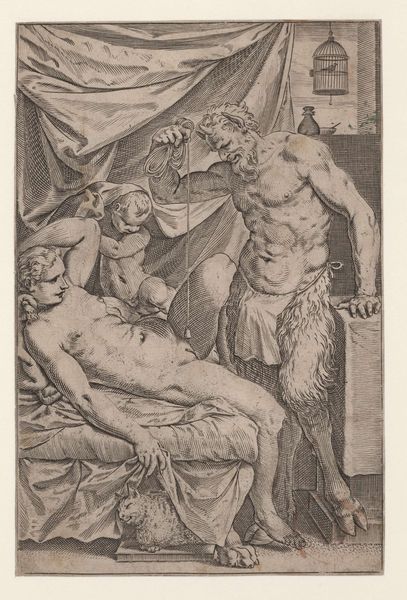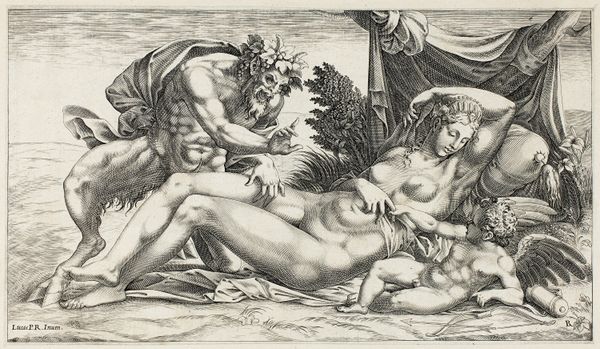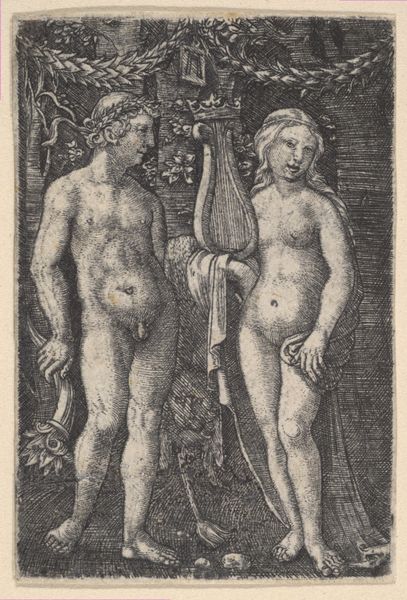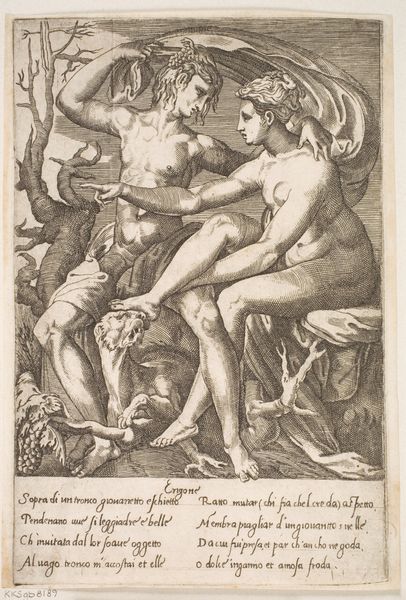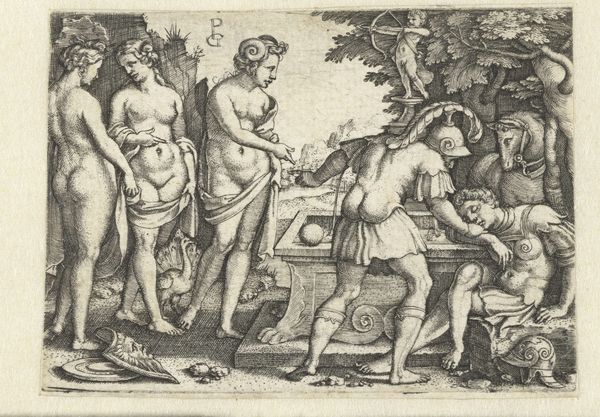
print, engraving
#
allegory
# print
#
figuration
#
11_renaissance
#
northern-renaissance
#
nude
#
engraving
Dimensions: height 35 mm, width 51 mm
Copyright: Rijks Museum: Open Domain
This tiny print of Triton and a Nereid was made by Sebald Beham in 1523, using a technique called engraving. The image is carved into a copper plate with a tool called a burin, and then printed. The material itself, copper, is key here. Its smooth, receptive surface allows for incredibly fine detail. Look closely, and you'll see the dense cross-hatching, which creates a sense of volume and shading. Beham was a master of this kind of mark-making. The intensity of labor, the sheer amount of work needed to create these marks, is part of the picture’s meaning. This wasn't just technical virtuosity; printmaking was a crucial means of distributing images in the 16th century, a kind of early mass media. Beham's choice of subject matter – classical mythology – speaks to the cultural aspirations of the time. It’s a fascinating intersection of craftsmanship, commerce, and cultural ambition. Hopefully, it will make you rethink how we define art.
Comments
No comments
Be the first to comment and join the conversation on the ultimate creative platform.
